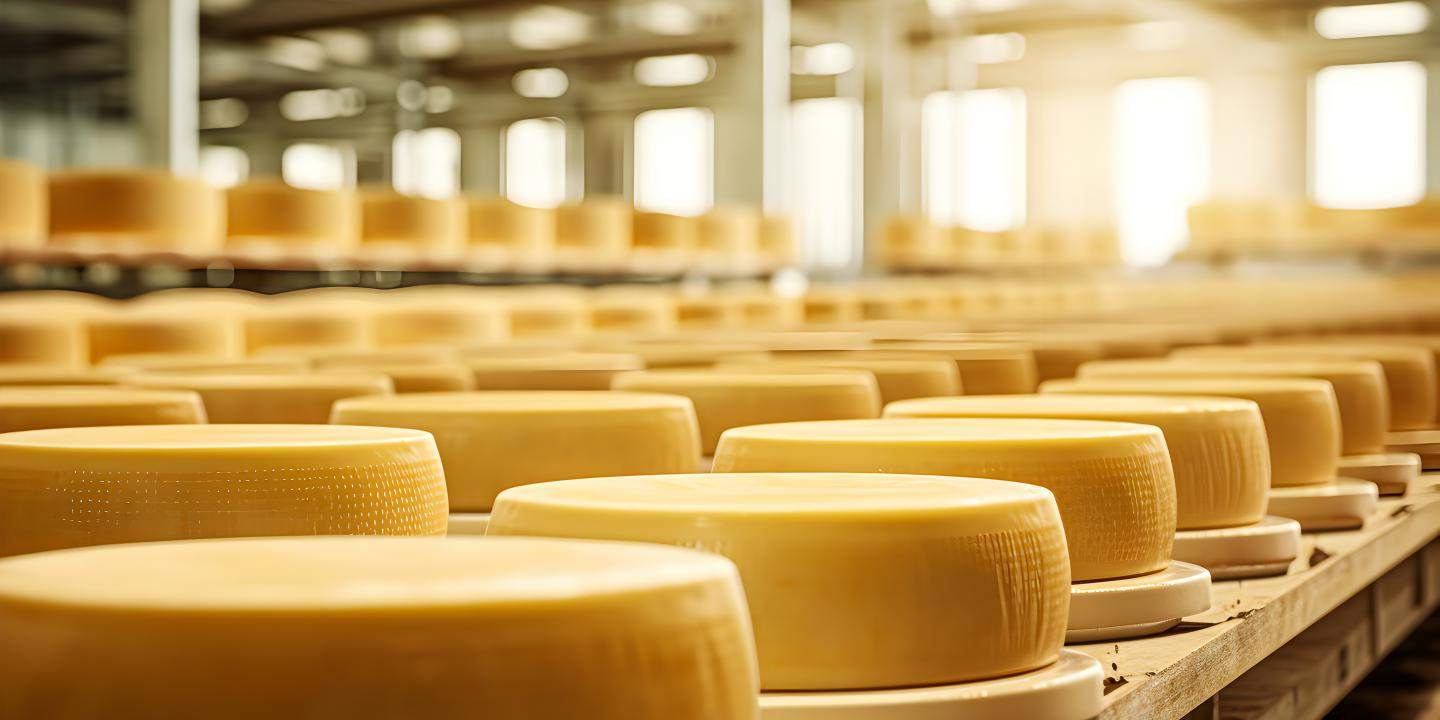Cheese production relies on the right minerals. Calcium chloride has played a key role in this process for years, while magnesium chloride — through Novasal — is increasingly used as an innovative solution for salt reduction and magnesium enrichment. The result? Tasty, healthy cheeses that maintain their quality and texture.
Calcium chloride in cheese production
Calcium chloride is a widely used additive in cheese production. It enables essential milk components to coagulate, forming cheese. By enhancing the action of rennet, calcium chloride helps produce a firm, cohesive curd. The milk’s ability to coagulate depends on the size of casein particles, the main protein in milk. A higher calcium content leads to larger casein particles, resulting in improved curd formation and better whey separation. Larger casein particles create a looser, more open network, allowing the whey to drain more easily from the curd.
"Calcium chloride is a common additive in cheese making"
Calcium levels in milk
Several factors influence the calcium content in milk. For instance, milk loses calcium at low storage temperatures, and part of it is lost during pasteurization—when the milk is heated and then rapidly cooled. Calcium levels also vary with the lactation season: milk produced later in the season contains less calcium. To compensate for these fluctuations, calcium chloride is often added as a coagulant. It can also be used in the brine bath during cheese ripening to enhance quality, firmness, and shelf life.
Magnesium chloride in cheese production
In collaboration with partners, research has been conducted on the use of magnesium salt in cheese making. What began as a pilot with Kaasboerderij Slob has evolved into a full-fledged product: a flavorful cheese with reduced salt content and added magnesium, now widely available. This development not only improves taste, texture, and nutritional value but also gives cheesemakers new tools to meet the WHO’s sodium reduction targets.
Novasal: Sodium reduction with magnesium
With Novasal, Nedmag offers an innovative solution for reducing salt in cheese. This high-quality magnesium salt helps producers lower sodium levels without compromising on taste, texture, or quality. The result is a healthier, magnesium-enriched final product that maintains its sensory appeal. The potential of Novasal continues to be explored — not only in cheese but also in other food categories such as tofu and sports nutrition.
Want to learn more?
Curious about what Novasal could mean for your production? Get in touch — together, we’ll explore the opportunities for sodium reduction and magnesium enrichment in your products!



